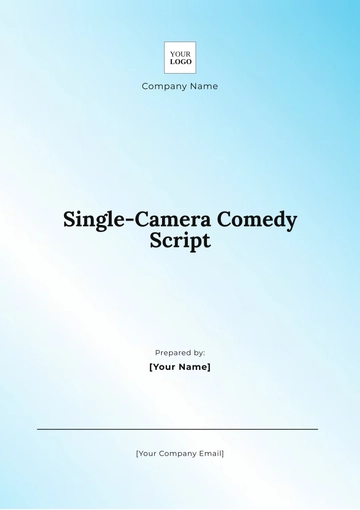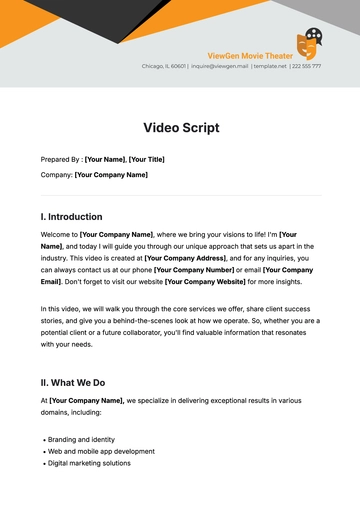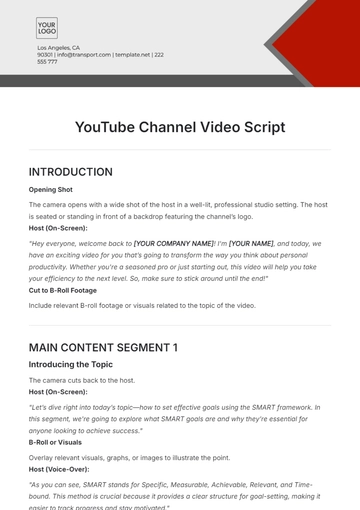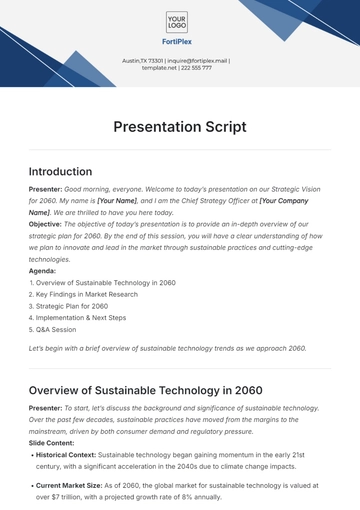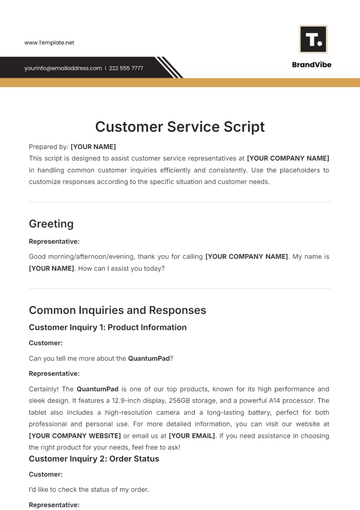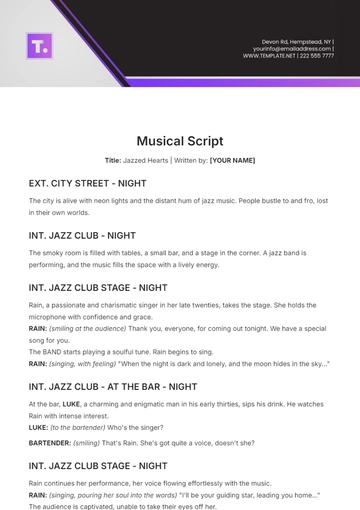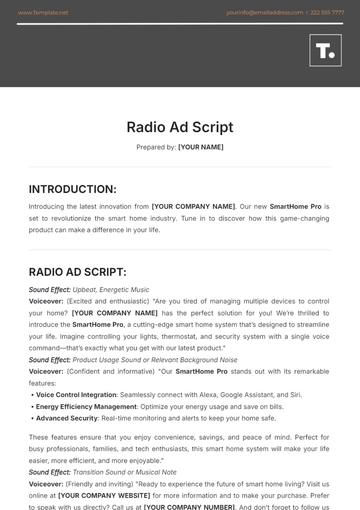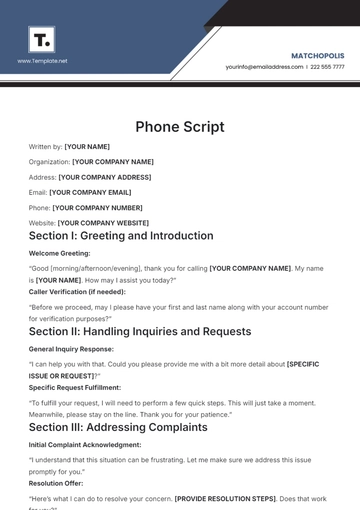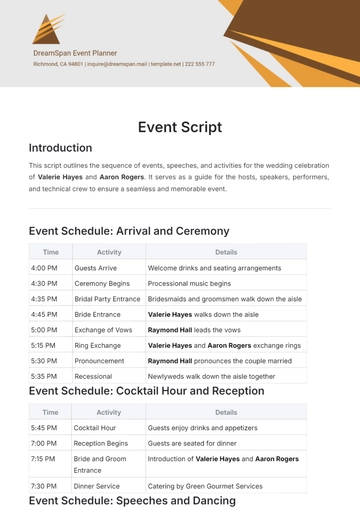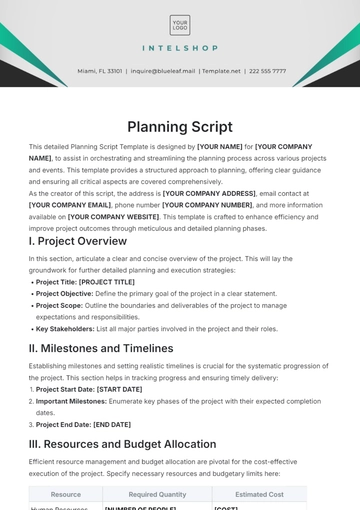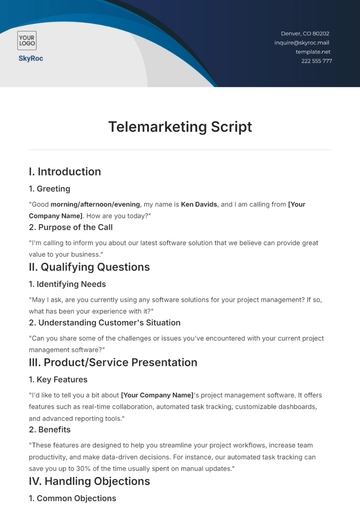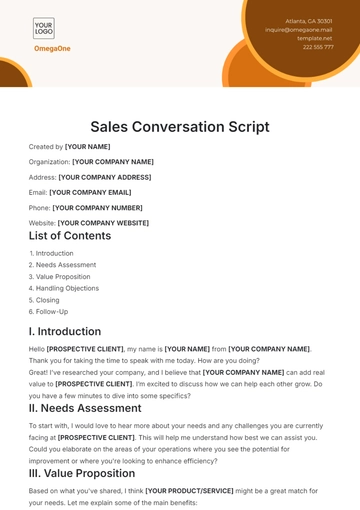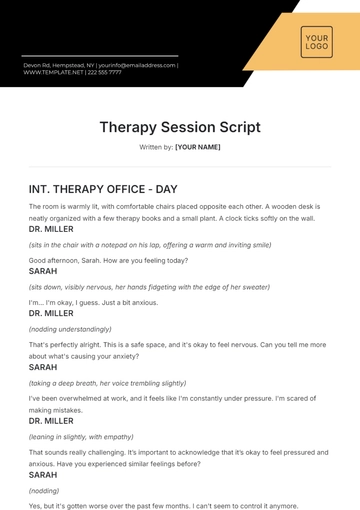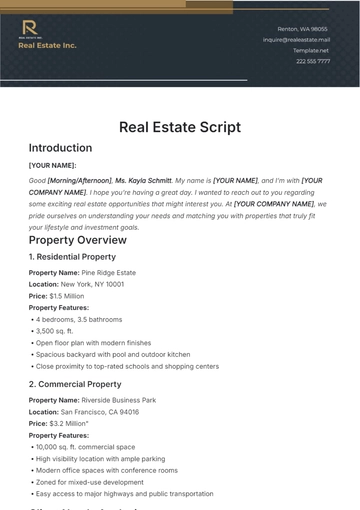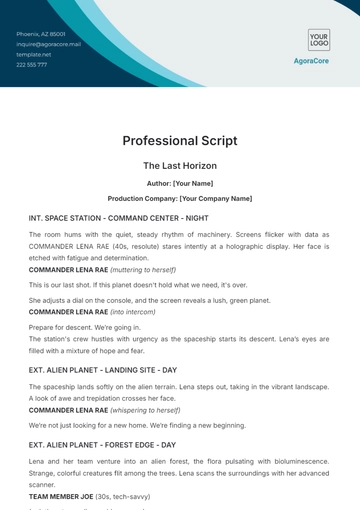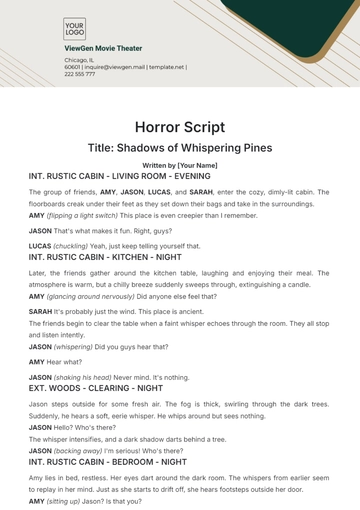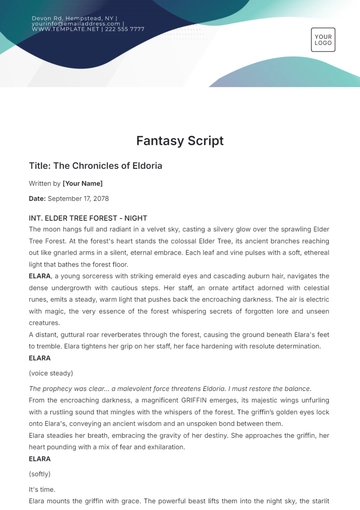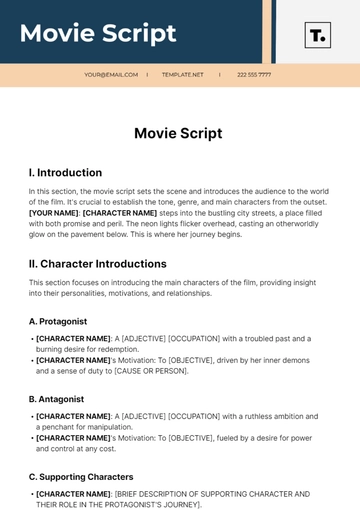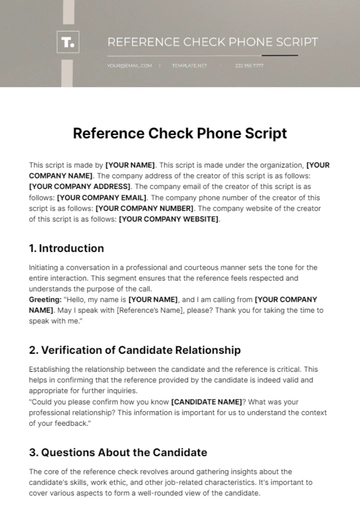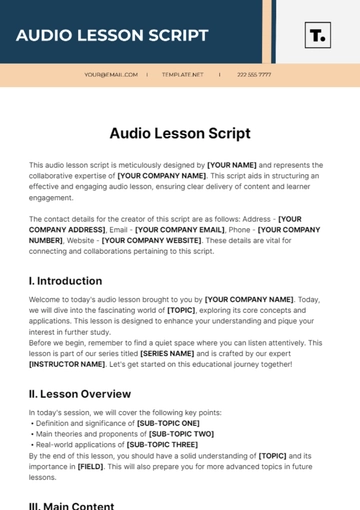Free Script For Kids Acting
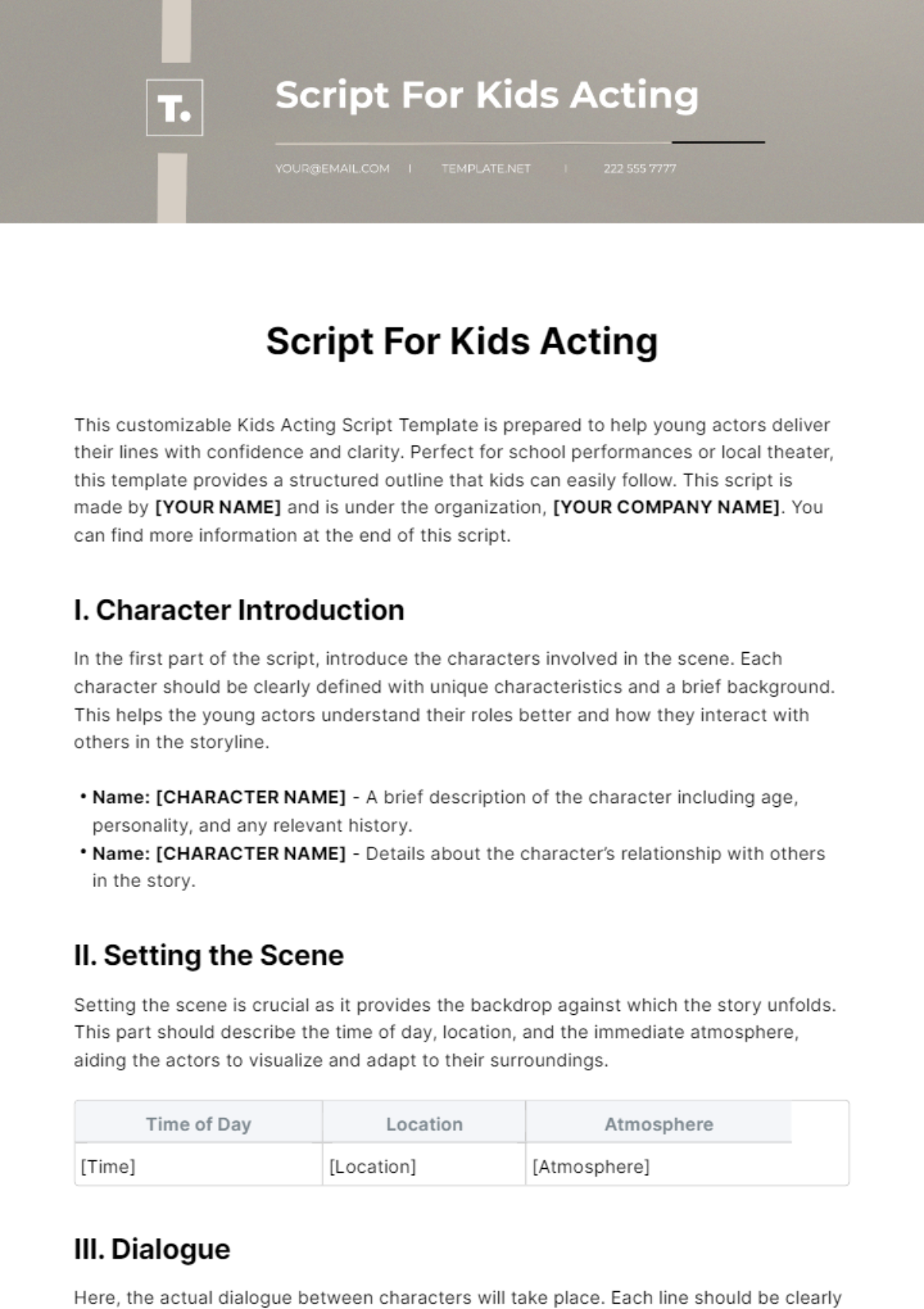
This customizable Kids Acting Script Template is prepared to help young actors deliver their lines with confidence and clarity. Perfect for school performances or local theater, this template provides a structured outline that kids can easily follow. This script is made by [YOUR NAME] and is under the organization, [YOUR COMPANY NAME]. You can find more information at the end of this script.
I. Character Introduction
In the first part of the script, introduce the characters involved in the scene. Each character should be clearly defined with unique characteristics and a brief background. This helps the young actors understand their roles better and how they interact with others in the storyline.
Name: [CHARACTER NAME] - A brief description of the character including age, personality, and any relevant history.
Name: [CHARACTER NAME] - Details about the character’s relationship with others in the story.
II. Setting the Scene
Setting the scene is crucial as it provides the backdrop against which the story unfolds. This part should describe the time of day, location, and the immediate atmosphere, aiding the actors to visualize and adapt to their surroundings.
Time of Day | Location | Atmosphere |
|---|---|---|
[Time] | [Location] | [Atmosphere] |
III. Dialogue
Here, the actual dialogue between characters will take place. Each line should be clearly attributed to the respective character, making it easy for children to follow who says what. Remember to include cues for actions or emotions that accompany dialogue to enhance performance.
[CHARACTER NAME]: "[Line of dialogue]" (Action or emotion)
[CHARACTER NAME]: "[Line of dialogue]" (Action or emotion)
IV. Directions for Acting
Provide specific instructions for the actors here. These can range from movement and positioning on stage to facial expressions and voice modulation. This section helps the actors understand how to physically perform their parts, making the scene more engaging and dynamic.
When [CHARACTER NAME] speaks, they should move towards [[CHARACTER ]], showing [ACTION].
[CHARACTER NAME] should pause after saying their line, giving a surprised look towards [DIRECTION].
V. Closure of Scene
The closure should neatly finish up the scene, providing ends to conversations or a transition to another scene. It could also include a cliff hanger if the script is part of a series. The ending should be clear and keep the audience wanting more.
[CHARACTER NAME] concludes the scene by Action or line that ends the scene.
The characters leave the stage with describe the action, mood, or dialogue that concludes their exit.
VI. Additional Information
This script is made by [YOUR NAME]. This script is developed under the organization [YOUR COMPANY NAME]. For more materials or scripts, please visit or contact us:
Address: [YOUR COMPANY ADDRESS]
Email: [YOUR COMPANY EMAIL]
Phone: [YOUR COMPANY NUMBER]
Website: [YOUR COMPANY WEBSITE]
- 100% Customizable, free editor
- Access 1 Million+ Templates, photo’s & graphics
- Download or share as a template
- Click and replace photos, graphics, text, backgrounds
- Resize, crop, AI write & more
- Access advanced editor
Introducing the Script For Kids Acting Template from Template.net! This versatile resource offers an array of editable scripts, perfect for young performers. Tailor each scene with ease using our customizable format, accessible for all skill levels. Editable in our Ai Editor Tool, crafting captivating performances has never been simpler. Elevate your child's acting journey today!




